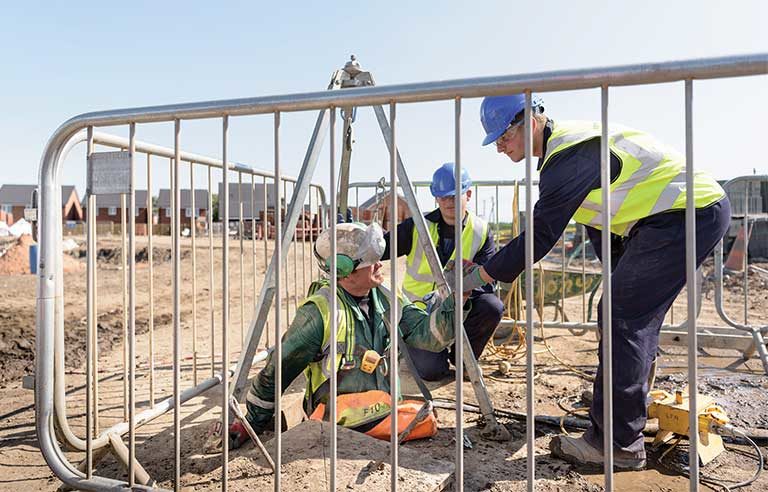
Photo: Monty Rakusen/gettyimages
A lack or absence of oxygen, the presence of toxic chemicals or fumes, and extreme temperatures: These are some of the major hazards associated with confined spaces.
“While confined spaces can be found in many types of workplaces, they are not always easy to recognize and signs of danger may not be obvious,” says the Kentucky Occupational Safety and Health Surveillance Program, which is part of the University of Kentucky College of Public Health.
Confined spaces are defined by these characteristics:
- Not designed for continuous occupancy
- Large enough for a worker to enter and perform work
- Have limited openings for entry and exit
Safety tips include:
- Train workers to never enter a confined space before the hazards have been evaluated and addressed, or to try to rescue another worker.
- Evaluate all confined spaces to determine what hazards exist or could occur given certain conditions. That includes checking for physical hazards and testing and monitoring for oxygen content, flammability, toxicity, and electrical and explosive hazards.
- Use the Hierarchy of Controls to develop a plan to address the hazards that are identified.
- Provide training frequently and conduct audits to ensure workers are following procedures.
KOSHS also recommends employers develop written procedures that cover:
- Identifying hazards before entry
- Testing and monitoring before and during entry
- Ventilating the confined space
- Maintaining contact with a trained attendant at all times during entry
- Protective equipment to be used during entry
- Emergency plans
McCraren Compliance offers a full range of safety and health training and consulting services. Plus we can help you incorporate well-being into your traditional systems in order to support the Total Worker Health of your workforce.
Call 888-758-4757, email info@mccrarencompliance.com or visit our website www.mccrarencompliance.com
Original article published by Safety+Health an NSC publication


